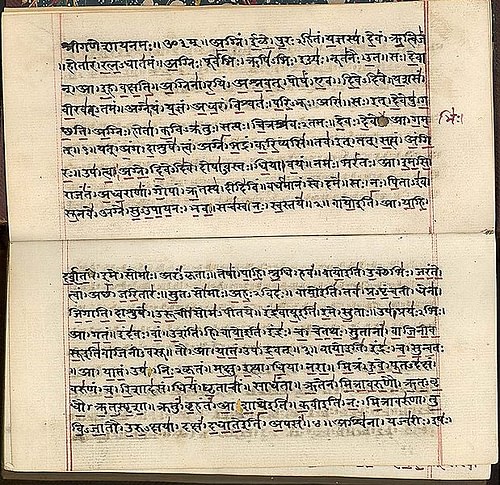
More literary interest attaches to the fourth Veda (1200 bc ), the Atharvaveda (an atharvan was a special priest), which contains hymns, incantations, and many magic charms. The Rigveda has 1,028 hymns and 10,600 verses. 1100 bc), the Smaveda (Veda of the Chants), is in essence an anthology of the Rigveda. It attributes to a yogic practice that purifies the. Yajur Veda helps in creating a deeper level of consciousness among people. Rig Veda Facts There are 1028 mantras (or hymns) in Rig Veda which are prayers to God and the Pancha Bhutani the five forces: earth (Prithvi), water (jalam). It is a step-by-step guide explaining the right way of performing religious ceremonies and sacred rituals. Hence the Veda is called Rik-Veda or RigVeda. Yajur Veda mainly talks about how the religious rituals are performed. The mantra part of the Sama-veda is poor in literary quality and historical interest, but the Brahmanas.

Many of the invocations in the Sama-veda are addressed to Soma, some to Agni and some to Indra. The hierophants associated with the Sama-veda are known as the udgatri. Rig Veda mainly contains various hymns for praying to Vedic Gods such as Agni (Fire God), Indra (The lord of Heavens), Mitra, Varuna (Water God), Surya (Sun God) etc. The Sama-veda also contains a detailed account of the soma rites. It is dated up to 4000 years ago but on the basis of astronomical calculations it is dated back to 8000 years and some calculations date back it to 10,000 years. Its words are said during prayers and religious gatherings. Rigveda is very important to Hindus, especially Hindus in India and Nepal. It is also one of the oldest writings in Sanskrit language. It is the world's oldest religious writings. It is counted as one of the four sacred Hindu writings, which are called Vedas.

Each of the 40 areas of the Veda is a value of our own consciousness, a map of our consciousness.

The Vedic literature is what is humming in my own transcendental consciousness. ' RUGHVED' is an ancient Indian religious book. The Veda are the sounds of total natural law the structure of pure consciousness, the togetherness of Silence and Dynamism. The Vedic accent is marked by underscores and vertical overscores in red. This segment contains the selected mantras as they appear in the Rig Veda. The first segment is called Sama Yoni (adhara) mantra Samhita, meaning that it is the basic text. After a scribal benediction ( śrīgaṇéśāyanamaḥ Au3m), the first line has the first pada, RV 1.1.1a ( agniṃ iḷe puraḥ-hitaṃ yajñasya devaṃ ṛtvijaṃ). Sama Veda is perhaps the earliest known musical literature. Rigveda (padapatha) manuscript in Devanagari, early 19th century.


 0 kommentar(er)
0 kommentar(er)
